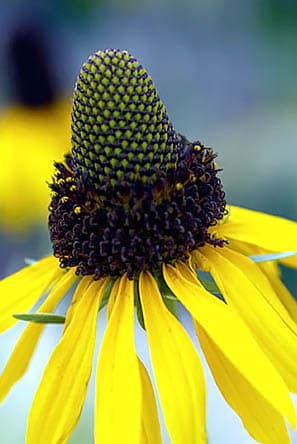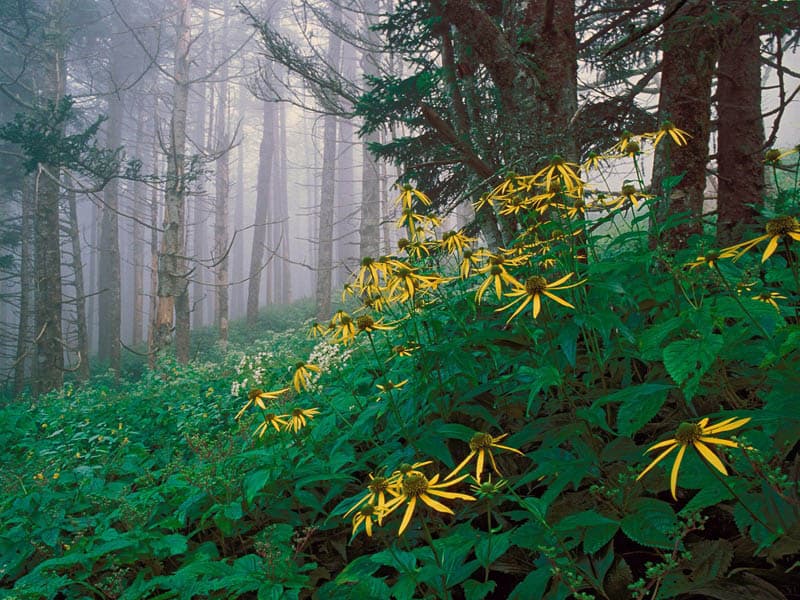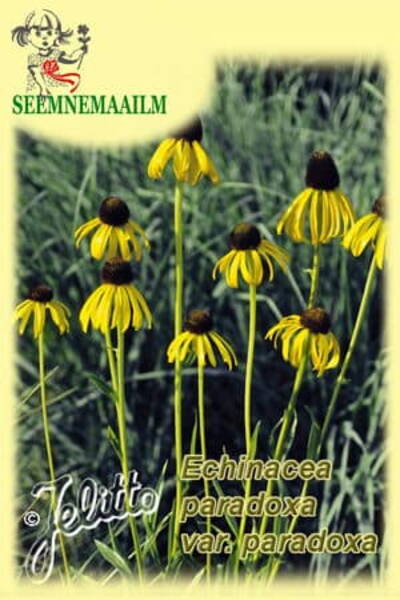Ex Tax: 1.25€
the only yellow echinacea in the genus, a feature of which is a lower frost resistance than other echinaceas.
An upright perennial from the Asteraceae family.
Origin: Rocky slopes of Missouri, Arkansas, Kansas, Oklahoma and Texas.
Flower colour: bright yellow.
Natural flowering period: July - October.
Distance between plants: 45 cm.
Winter hardiness zones: Z4 - Z9.
Plant up to 80 cm high. The leaves are dark green, narrow. Dark brown tubular echinacea flowers form a very convex, almost round center, reed - an unusual yellow color, strongly drooping, almost hugging the stem. Occurs naturally and rarely in collectors' gardens.
Echinacea is perfect for a natural, natural garden, where its seed heads left for the winter on long stems will serve as an excellent decoration and attract birds. The best neighbors for echinacea are other plants that bloom in late summer and early autumn: dahlias, monarda, yarrow, rudbeckia, knifofia, various types of salvia, acanthus, heliotrope, sedum, as well as ornamental cereals.
Echinacea cut flowers stand in water for a long time.

Family: Asteraceae, Compositae.
Origin: Rocky slopes in Missouri, Arkansas, Kansas, Oklahoma and Texas.
Special Features: Yellow petals versus the rose-purple colored blossoms of most coneflowers. A paradox, indeed!
Colour: Yellow.
Natural Flowering Period: July - October.
Winter Hardiness Zones: Z4-9.
Growth Habit: Upright.
Foliage: Narrow, pubescent.
Height with Flower: 80 cm.
Spacing between Plants: 45 cm.
Soil Requirement: Well-drained soils, pH 5.8 - 6.8.
Location: Full sun.
Use: Plant together in the border with Digitalis "Snow Thimble", Gaillardia "Burgundy" and Knautia "Mars Midget".
Specialities: Cut flower potential.
Cultural Tips:
Grams per 1000 seeds: 5. Seeds per Gram: 200.
Seeding Recommendation: 7,5 g / 1000 plants.
Sowing Rate: 3 seeds per cell.
Plug tray recommended size(s): 72 or 128 germinate after 3 - 4 weeks, keep seed in constant moisture (not wet) with temperatures of about + 20°C. Seeds must be covered thinly. After germination, the seedlings must be kept cool (+5 to 10°C) in the months with less daylight hours, but must not be exposed to frost. At this time, it is of great benefit if the seedlings can receive at least 12 hours of light per day.
Scheduling:
Best Sowing Date: Anytime Sowing to Germination: 3 - 4 weeks.
Germination to Transplant: 4 - 6 weeks. Transplanting to salable Plant: 6 - 8 weeks.
Cutting-Back at Transplanting: Not necessary.
Growing On: Container Size(s): 1-2 plugs per 11/12 cm; 2-3 plugs per 15 cm.
Vernalization: Some flowering will occur the first year without vernalization, but improved flowering will occur the 2nd year; and 3-10 weeks of cool temperatures might benefit fuller flowering in the first year.
Forcing: There has been no research on ECHINACEA paradoxa - Yellow Coneflower, but an obvious place to experiment - following vernalization - would be raising daytime temperatures to 15° - 17°C. Provide 16 hours of continuous lighting. During the short days of winter, provide a night interruption lighting of 4 hours between 10:00 p.m. and 2:00 a.m. Some later flowering species can be forced in 14 - 16 weeks and perhaps sooner at warmer temperatures. Further experiments are warranted with ECHINACEA paradoxa - Yellow Coneflower. Fertilization: Medium (150-200 ppm).
Gram to per 1000 plants = 15,0 g.
* These seeds germinate rapidly depending on species and origin. If germination does not occur after 3-4 weeks a cooling period of 2-4 weeks is recommended.

Yellow Coneflower. Bot.syn.: Rudbeckia paradoxa.












